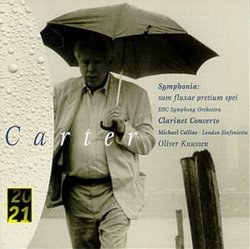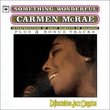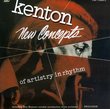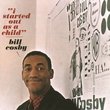| All Artists: Elliott Carter, Oliver Knussen, Michael Collins, London Sinfonietta, BBC Symphony Orchestra Title: Elliott Carter: Symphonia: Sum Fluxae Pretium Spei (1993-96) / Clarinet Concerto (1996) (20/21 series) - Oliver Knussen Members Wishing: 1 Total Copies: 0 Label: Deutsche Grammophon Release Date: 1/11/2000 Genre: Classical Styles: Forms & Genres, Concertos, Historical Periods, Modern, 20th, & 21st Century, Instruments, Reeds & Winds, Symphonies Number of Discs: 1 SwapaCD Credits: 1 UPC: 028945966021 |
Search - Elliott Carter, Oliver Knussen, Michael Collins :: Elliott Carter: Symphonia: Sum Fluxae Pretium Spei (1993-96) / Clarinet Concerto (1996) (20/21 series) - Oliver Knussen
 | Elliott Carter, Oliver Knussen, Michael Collins Elliott Carter: Symphonia: Sum Fluxae Pretium Spei (1993-96) / Clarinet Concerto (1996) (20/21 series) - Oliver Knussen Genre: Classical
Composed by Elliott Carter at the ripe old age of 84 and debuted in 1998 (a time when the composer was more prolific than ever), Symphonia could be one of the contemporary music maverick's grandest works to date. In about ... more » |
Larger Image |
CD DetailsSynopsis
Amazon.com Composed by Elliott Carter at the ripe old age of 84 and debuted in 1998 (a time when the composer was more prolific than ever), Symphonia could be one of the contemporary music maverick's grandest works to date. In about 45 minutes, the piece--inspired by the 17th-century poem Bulla by Richard Crenshaw--sonically mimics an airborne bubble, bouncing from one environment to the next until--you guessed it--it's gone for good. The opening movement, Partita, swings between atmospheric string passages and sharp clusters of percussion and brass. The second, Adagio tenebroso, is a melancholy cauldron (and the composition's darkest moment), and Allegro scorrevole, the finale, is where the composer pulls out all the stops and creates even more sharp contrasts, which gradually make the bubble (one can assume) explode. Even in its atonal and ragged state, there's a gorgeous poetry at work here. 1996's Clarinet Concerto is an added bonus, a composition where the lone clarinet part threads its way through various instrumentations (and themes), creating an unexpected, but delightful ending. Throughout these atmospheric and challenging works, the London Sinfonietta and the BBC Symphony Orchestra deliver remarkable performances. A great pairing of world premieres. --Jason Verlinde Similarly Requested CDs
|
CD ReviewsThe Masterwork and Capstone of Cater's Career Karl Henzy | 01/12/2000 (5 out of 5 stars) "Symphonia is Carter's masterpiece, and as he's already 91, it's likely to be the capstone to his long career. His music is, as ever, complex, but not just for complexity's sake. "Partita," the 1st movement, is the wild, playful opening. "Adagio tenebroso" is the slow, mournful procession in the middle (yet crackling with energy, and very beautiful). "Allegro scorrevole" is the brilliant synthesis, with long lyrical string lines rising and falling over rapid flurries in the winds. If you can appreciate modern music at all, listen to Symphonia several times and you'll begin to realize that it is the greatest symphony since Mahler." As colorful as a bubble, and as difficult to capture. tertius3 | MI United States | 02/05/2001 (5 out of 5 stars) "Many reviewers have the highest praise for this premiere recording of Symphonia, so I listened...and am blown away. I don't understand all that's going on in this uncompromisingly modernist and dissonant work, but I'm surprised to like it and I return to a great piece of music. Like the bubble it's named for, the work opens with nothing if not scintillating effervescence. The ever-changing flux of through-composition has few points of imitation and easy recognition. The middle movement is low, slow, and long, unsettled and bleak in tone, the double basses a striking underpinning. The finale is swirling, windblown, and incandescent, gradually rising up through the orchestra until the inevitable fate is reached. This is remarkably beautiful and accessible music for a consumate arch-modernist, and leads me not to avoid his music in the future. The Clarinet Concerto (also 1996) is of the pointillist school of Webern. Each note is almost to be appreciated as a sound object, against the periodically shifting small ensembles of instruments. The brash music is characterized by extremely athletic leaps between the shrill and woody ends of the clarinet's range. The movements are contrasted by great changes in tempo, timbre, and dynamics, from excited twitterings to contemplative sonorities to ensemble sections with a metallic sheen of dissonance. The German disk of English musicians playing a great American composer is nicely packaged in a cardboard wallet. I hope it lasts as long as I think I am going to like this music!" Masterwork from a 20th century great R. Hutchinson | a world ruled by fossil fuels and fossil minds | 06/16/2001 (5 out of 5 stars) ""Symphonia: sum fluxae pretium spei" is Elliot Carter's greatest symphonic work since his 1969 "Concerto for Orchestra." What an accomplishment! Hearing Carter makes me want to spread the word that great composition is not in the past -- Bach, Mozart, Beethoven, have worthy successors today. "I am the prize of flowing hope" is the translation of the Latin title, and this might sound like arrogance, but it refers to a bubble, to the evanescence of life. Future accounts will surely marvel at Carter's productivity late in life (the polar opposite of Mozart). He composed the symphony in parts, but once complete in 1998, he moved on to quickly compose the Clarinet Concerto. If the disconnect between advanced music (both "contemporary classical" and avant-garde improvisation) and a mass audience is never overcome, the artistic and listening vanguards have each other! Here's a great line from Bayan Northcott's liner notes:
"Against all the minimalisms, retro-styles and compromises with commercialism that have marked the music of the last couple of decades, Symphonia embodies a comprehensive and uncompromising reaffirmation of the modernist vision."" |

 Track Listings (10) - Disc #1
Track Listings (10) - Disc #1



